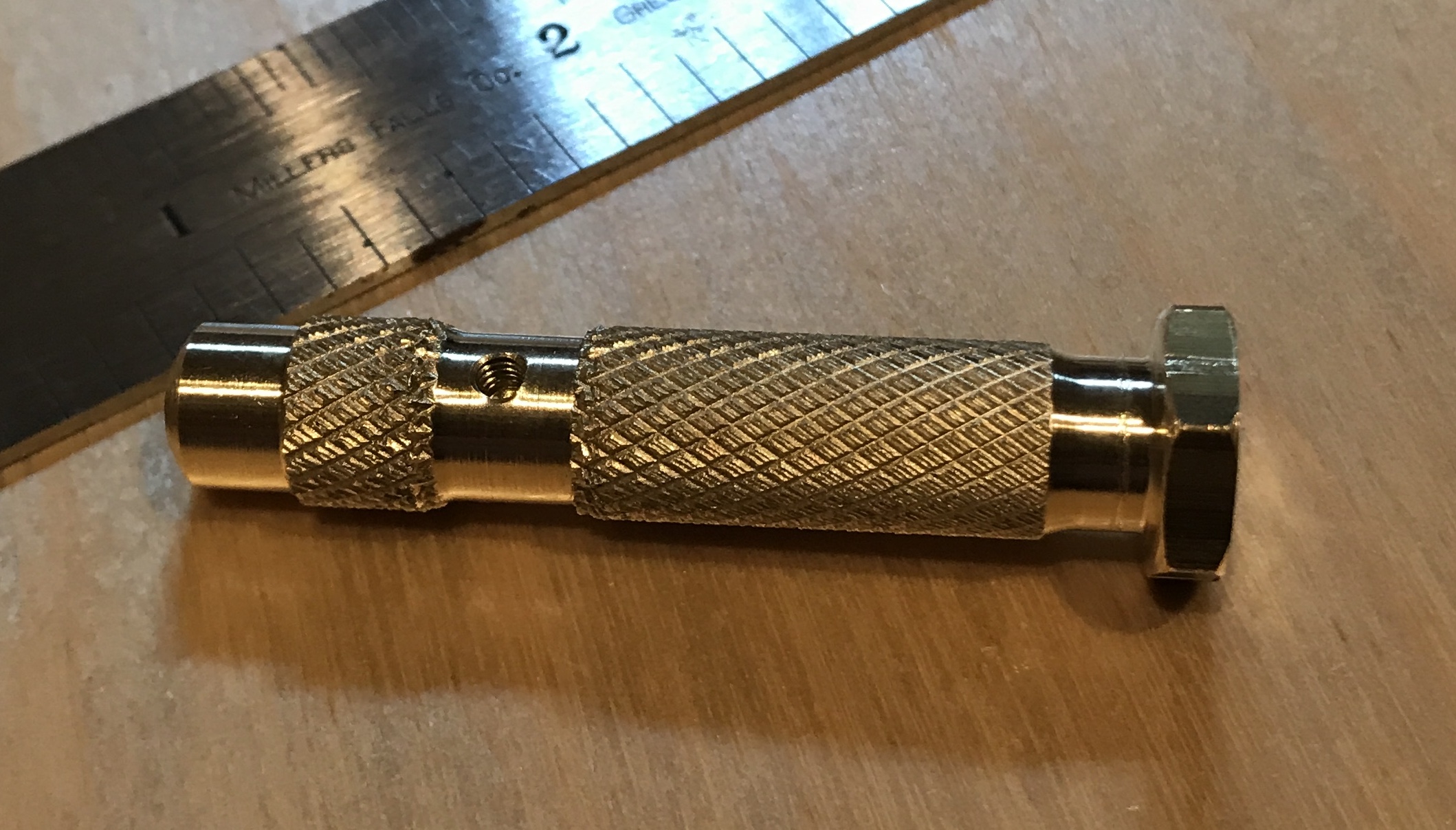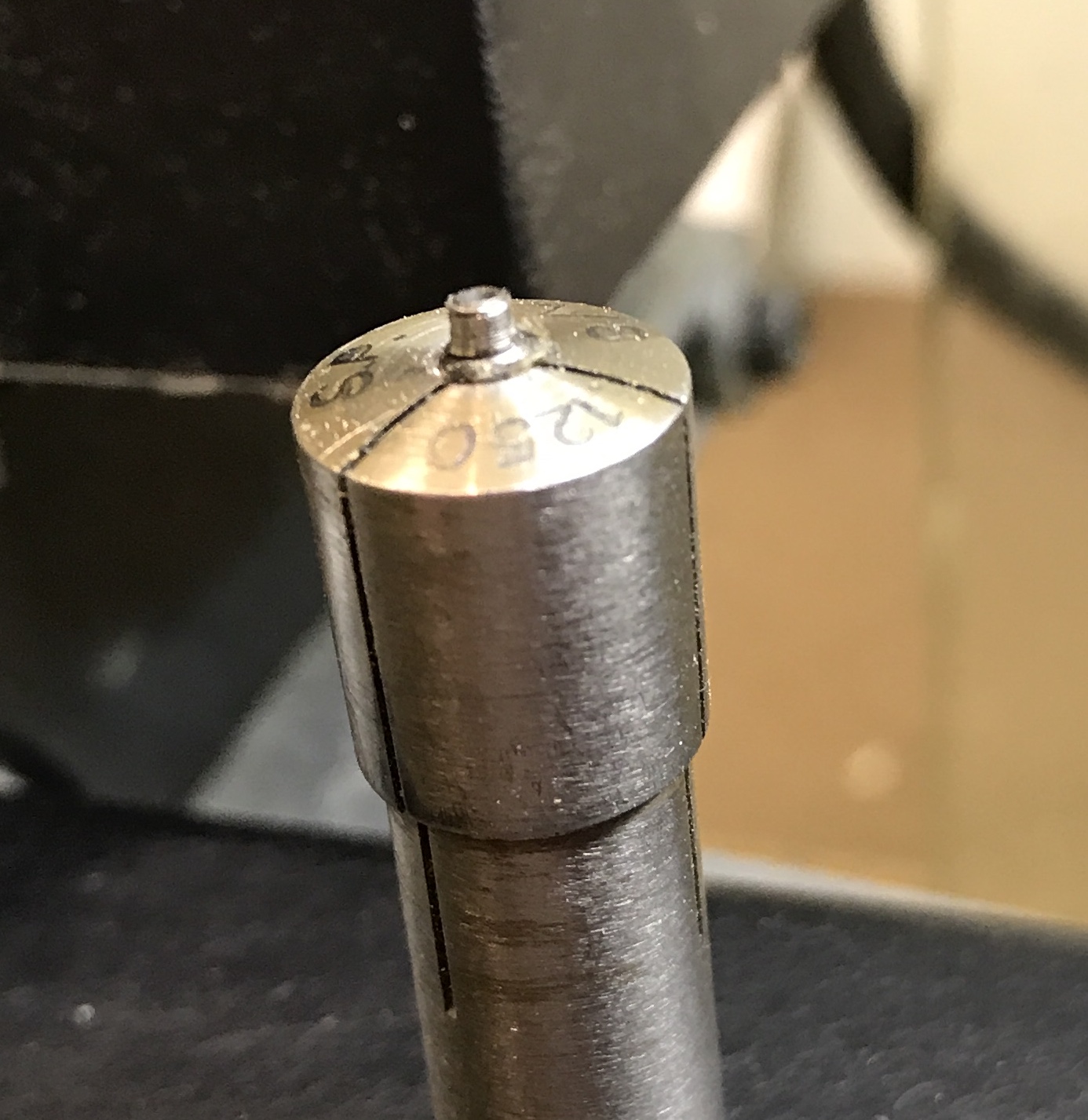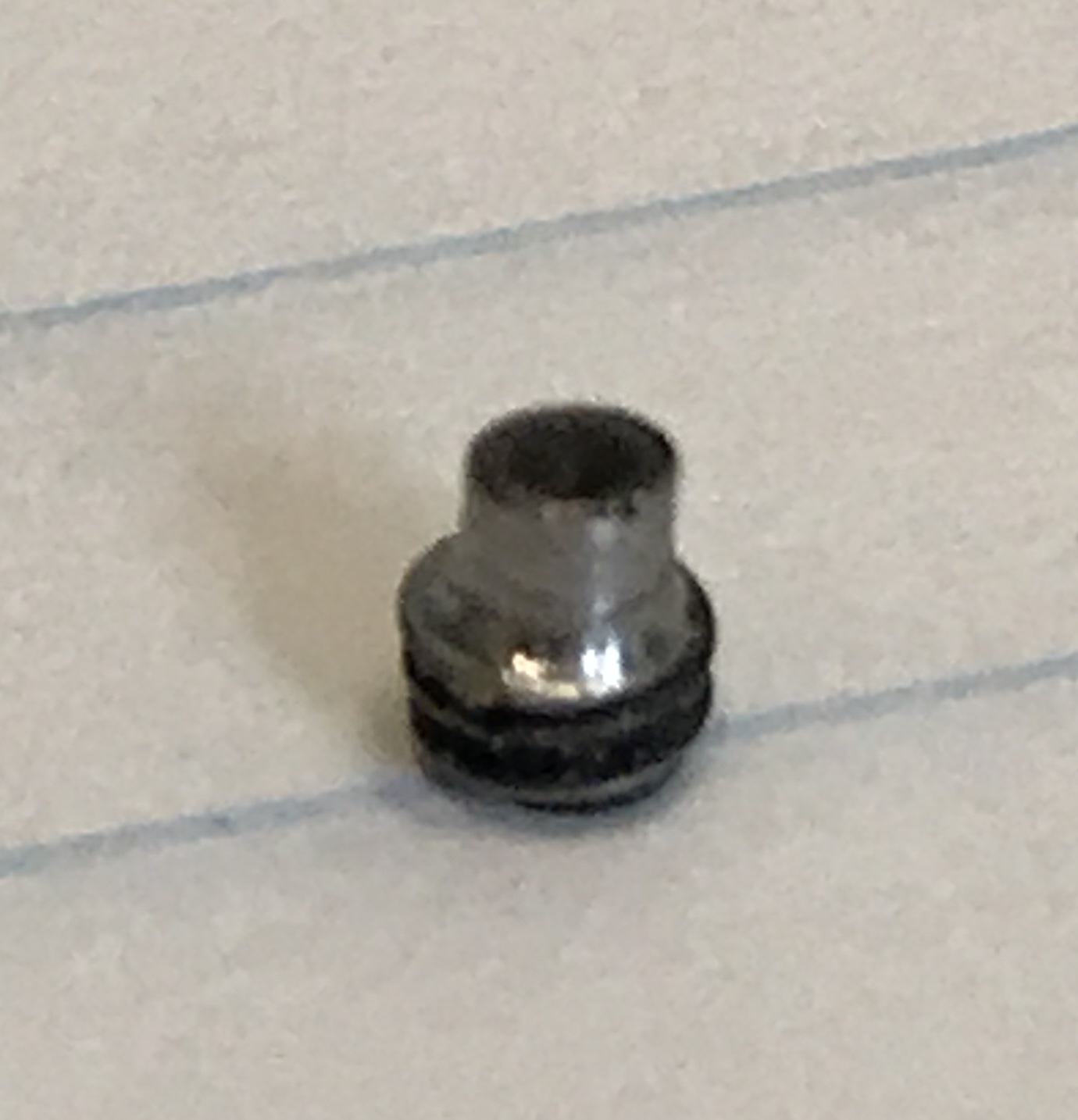A handle was needed for the scupper tool made to put "scupper impressions" on the inside rails of the wooden ship. A simple design was planned. The tool was made from 1/2" brass hex stock. A little hex was to be left on the end of the tool so it would not roll off of the work table.
A 2 1/2" length of brass was cut with a hack saw. This was chucked in the lathe, faced, and center drilled. It was then drilled about 1" deep with a #59 drill. Using a tailstock center the diameter was reduced for a length of 1 7/8" to 3/8". Three spots on this rod was further reduced by 0.04". The first 1/4", another 3/8" that was 3/8" passed the end of the first reduction, and the last 1/4". The non-reduced portions were knurled.
I clearly need some practice knurling in brass based on these rather ugly knurls.
The tailstock center was removed and a heavy chamfer was filed on the free end. The hex was lightly chamfered as well. The part was parted off with the parting tool at 2". About one quarter of the way through the parting the new face was lightly chamfered with a triangular file. The pip was filed off the newly parted face.
The work was transfered to the mill vise and a drill chuck was centered over the part. The spindle was then centered over the middle of the 3/8" reduced portion. The part was drilled with a #43 drill and tapped 4-40 for a set screw. The #59 drill was used to deburr the inside of the long hole and chips were blown out with compressed air. The part was washed with soap and water.
The set screw does not hold the tool tightly. This is probably because the threads were not cut sufficiently far down the cross-hole. The hole the thread cut to is just to narrow to let enough of the tap in even though a bottoming tap was used. I will need to modify the set screw a little to make it an effective clamp.

The screw is about 0.110" in diameter. The smallest collet I have is 0.125". The screw was wrapped in sandpaper and inserted in the collet. The second attempt held tightly. The end of the screw was cut just sufficient to get rid of two threads. The pictures below show the set screw in the collet and a magnified view removed from the collet.


Unfortunately, this set screw modification did not improve its holding ability. The tool will probably work just fine, but the modified drill bit can be pulled out of the handle with a little effort. The last picture shows the tool installed.
